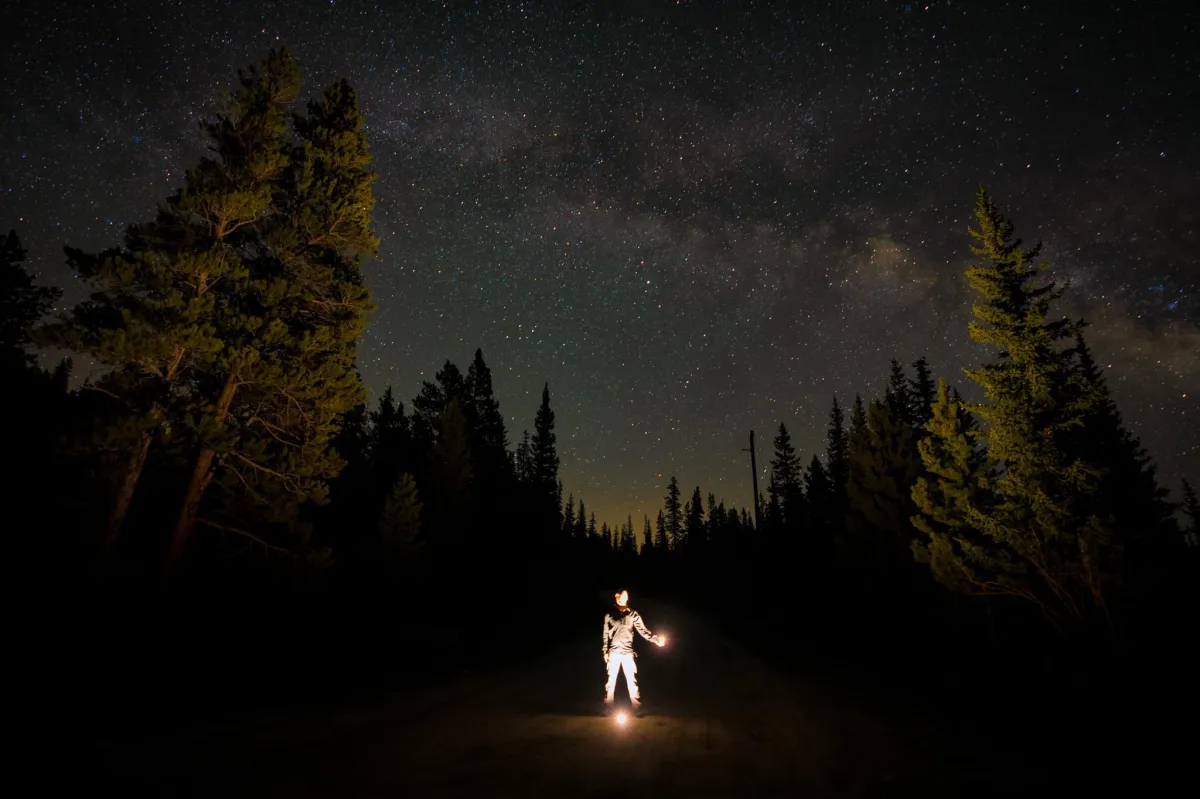OUR BLOG
Lorem ipsum dolor sit amet, consectetuer adipiscing elit. Aenean commodo ligula eget dolor. Aenean massa. Cum sociis natoque penatibus et magnis dis parturient montes, nascetur ridiculus mus.

Shooting The Moon
SHOOTING THE MOON
Since I’m frequently asked how I create my Moonscapes, I put together this not-so-brief tutorial to illustrate my process.
Let’s dive right in, okay?
TIMING
First things, first! Timing is EVERYTHING. While there are many great opportunities to capture spectacular images of the moon year round, I generally plan my shoots around notable occasions like Supermoons and Lunar Eclipses.
Supermoons are full moons that appear larger than normal in the sky and are great to capture rising and setting. Supermoon rises, like that pictured here of the Pink Moon on April 7th 2020, are the focus of this tutorial.

1/33 sec @ f8, 200mm, ISO 100
When supermoons rise as the sun is setting, we have the opportunity to not only capture the moon itself, but also the brilliant colors on display after the sun dips below the horizon, which we see frequently here the Rocky Mountains of Central Colorado.
COMPOSITION
The next important thing to consider is the final image we are trying to create. Do we want an image of the moon itself, with all its craters and peaks on full display? Or do we want to display the moon in a natural setting as we Earthlings see??
Although the former is enjoyable, I generally go for the later and create what I call Moonscapes aka the moon on display in its natural setting from here on Earth.
SCOUTING
Creating Moonscapes generally requires a bit of location scouting, so I grab my iPhone, PhotoPills app and drive around looking for interesting compositions in which the moon will rise using the Night AR feature in the PhotoPills app. Using this awesome app (did I say awesome?), we can do this hours or even days in advance.
LENSES
Regardless of which type of moon shoot I’m going for, I generally shoot with my Pentax D FA* 70-200mm and DA AF Rear Converter. With these mounted on my Pentax K3-II body, I have an equivalent focal length of 150-428mm in 35mm terms. I’ll save you the math, just trust me here!
While this combination is acceptable for close up shots of the moon’s peaks and valleys, the moon itself in no way fills the frame and generous cropping is required in post. On the other hand, for Moonscapes, I find this combination to work perfectly.
TO TRIPOD OR NOT TO TRIPOD
While under certain lighting conditions we may be able to get by shooting handheld, I would not count on it. So yes, we are going to need a sturdy tripod. One that supports the gear listed above comfortably. Again, trust me here, or perhaps ask my wife??
EXPOSURE SETTINGS
Now that we have scouted our location for composition, have our tripod firmly planted, gear mounted and are patiently waiting for the moon to crest the horizon we can start adjusting our exposure settings. Enable Manual Mode and let's get started setting the initial shutter speed, aperture and ISO.
ISO: 100
Aperture: f8
Since we are shooting a Moonscape, we want some depth of field
Shutter Speed: Anywhere from ¼ to 1 second.
This will largely depend on the lighting conditions at the moment and some trial and error will likely be needed as the moon rises. As you will soon learn, the moon moves relatively quickly in the sky. So I find keeping the shutter speed under 1 second very important to keep the moons detail intact
Shutter Delay: 2 seconds
I enable shutter delay to eliminate camera shake, Optionally, use of a remote trigger accomplishes the same.
FOCUSING
Again, we could get lucky under the right lighting conditions using Auto Focus, but I would not count on it. Focusing manually is the only way to go.
So, focus manually on something close to the horizon where the moon will rise. I use a combination of Live View and Focus Peaking build into my K3 II to accomplish this. For your camera model please consult the manual or - as they say - RTFM!
TEST SHOTS
Now is an excellent time to take a few test shots.
Check for a balance of dynamic range between the sky and landscape. The dynamic range between the brightness of the moon, sky and Earth is going to make or break any chance of capturing the scene in a single exposure. Assuming we are somewhere in the golden to blue hour, we have an excellent chance the moon will not rise so brightly it blows out the entire scene.
Do note, if we just aren’t blessed with having everything in balance, we’ll have to resort to more advanced techniques like exposure bracketing and blending/compositing in Photoshop. While these techniques do yield spectacular results, it's more advanced and out of the scope of this tutorial!
GETTING THE SHOT!
It’s time to work the scene!
The moon is rising, big and bold over the horizon. We’re firing off exposures. Check the focus. Re-check the focus. Check the composition. Try different compositions. Try different shutter speeds.
We might only have a mere 20 minutes to work the scene before the moon brightens, blowing out the scene, and starts getting relatively smaller in our Moonscape. Work quickly and with intention using ALL we have learned to this point. All of it. Everyting!
[INSERT IMAGE]
1/33 sec @ f8, 280mm, ISO 100
POST PROCESSING
Now that our hours (probably days actually) of planning and meager 15 minutes of shooting is complete, it's time to download the images and prepare them for sharing with the world.
I hope it goes without saying, it should anyway, that our images were captured in RAW format. This gives us the greatest flexibility in post. Assuming a dynamically balanced scene, standard adjustments for light, color and crop in your application of choice (*cough* Lightroom cough) is all that's required.
Personally, as I develop my images, I try to portray the scene naturally as I felt and saw it unfold in front of me. To captivate the viewer’s eye in the same manner the scene captivated me.
IN CLOSING
Thanks for following along, you did great! I hope you find this tutorial informative and more importantly that it continues inspiring you to get out in the field and practice your love of photography. As with everything else in life, practice makes perfect.
And don’t get discouraged ! If there is one thing I have learned over several years of doing landscape photography, it's that things rarely go the way you had planned - or as I like to say “the mountain doesn’t care about your plans.”
Fortunately, the more you get out in the field, the better your chances are of actually having those perfect conditions and ultimately making the images that perfectly convey your vision as a photographer. Cheers!
[INSERT IMAGE]
1/125 sec @ f8, 200mm, ISO 100
FREQUENTLY ASKED QUESTIONS
Q:
Lorem ipsum dolor sit amet, consetetu sadipscing elitr, sed diam nonumy!
Lorem ipsum dolor sit amet, consetetur sadipscing elitr, sed diam nonumy eirmod tempor invidunt ut labore et dolore magna aliquyam erat, sed diam voluptua. At vero eos et accusam et justo duo dolores et ea rebum. Stet clita kasd gubergren, no sea takimata sanctus est.
Q:
Lorem ipsum dolor sit amet, consetetu sadipscing elitr, sed diam nonumy!
Lorem ipsum dolor sit amet, consetetur sadipscing elitr, sed diam nonumy eirmod tempor invidunt ut labore et dolore magna aliquyam erat, sed diam voluptua. At vero eos et accusam et justo duo dolores et ea rebum. Stet clita kasd gubergren, no sea takimata sanctus est.
Q:
Lorem ipsum dolor sit amet, consetetu sadipscing elitr, sed diam nonumy!
Lorem ipsum dolor sit amet, consetetur sadipscing elitr, sed diam nonumy eirmod tempor invidunt ut labore et dolore magna aliquyam erat, sed diam voluptua. At vero eos et accusam et justo duo dolores et ea rebum. Stet clita kasd gubergren, no sea takimata sanctus est.
Q:
Lorem ipsum dolor sit amet, consetetu sadipscing elitr, sed diam nonumy!
Lorem ipsum dolor sit amet, consetetur sadipscing elitr, sed diam nonumy eirmod tempor invidunt ut labore et dolore magna aliquyam erat, sed diam voluptua. At vero eos et accusam et justo duo dolores et ea rebum. Stet clita kasd gubergren, no sea takimata sanctus est.
GET IN TOUCH
Lorem ipsum dolor sit amet, consectetuer adipiscing elit. Aenean commodo ligula eget dolor. Aenean massa. Cum sociis natoque penatibus et magnis dis parturient montes, nascetur ridiculus mus.
Donec quam felis, ultricies nec, pellentesque eu, pretium quis, sem. Nulla consequat massa quis enim. Donec pede justo, fringilla vel, aliquet nec, vulputate eget, arcu. In enim justo, rhoncus ut, imperdiet.
(719) 839-1994
PO Box 406
- Monday - Friday, 8:00 am - 5:00 pm
LEARN MORE

Follow Us
Follow Us
Lorem ipsum dolor sit amet, consectetuer adipiscing elit. Aenean commodo ligula eget dolor. Aenean massa. Cum sociis natoque penatibus et magnis dis parturient montes, nascetur ridiculus mus. Donec quam felis, ultricies nec, pellentesque eu, pretium!
Services
More
© Copyright 2025. Company Name. All rights reserved.
